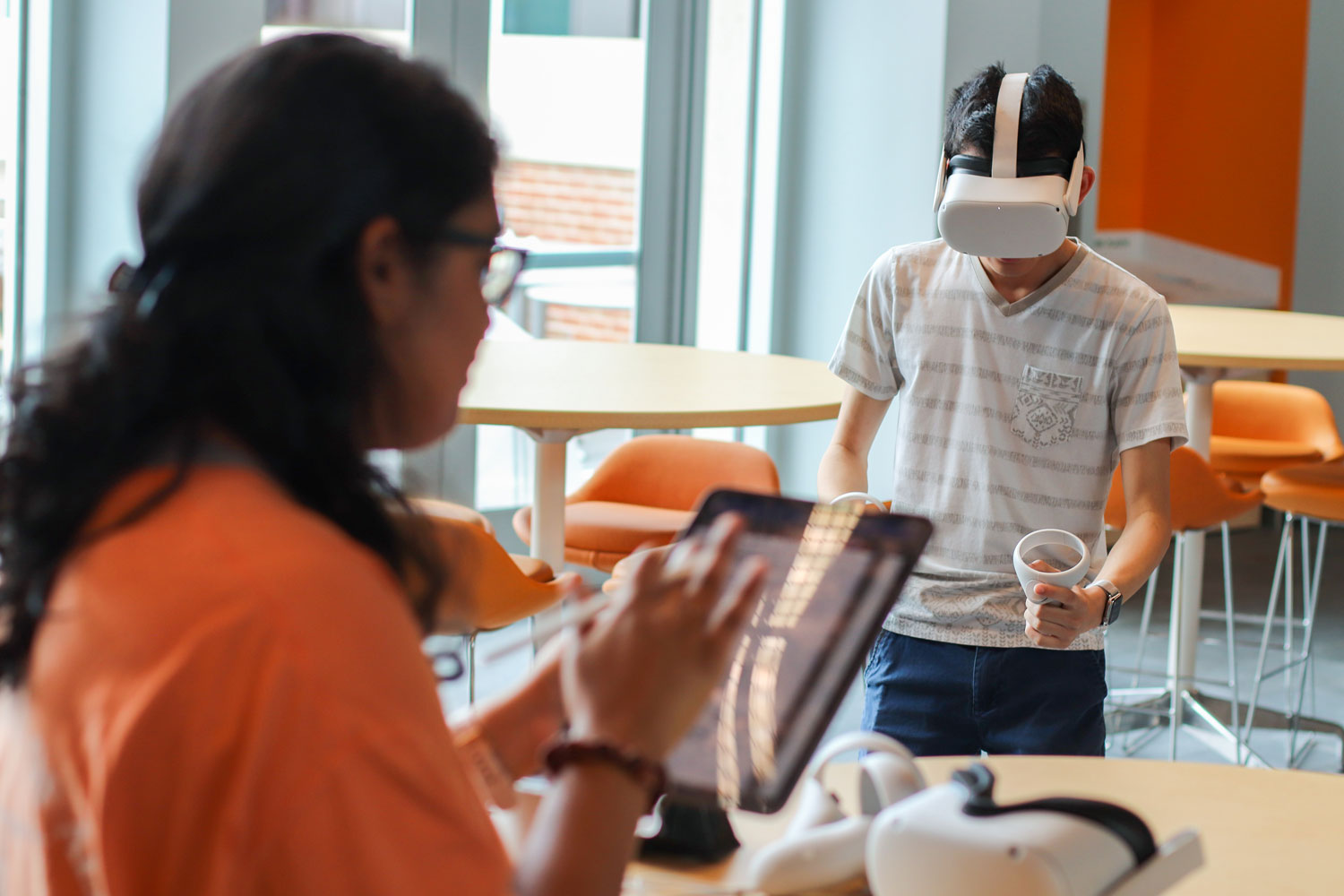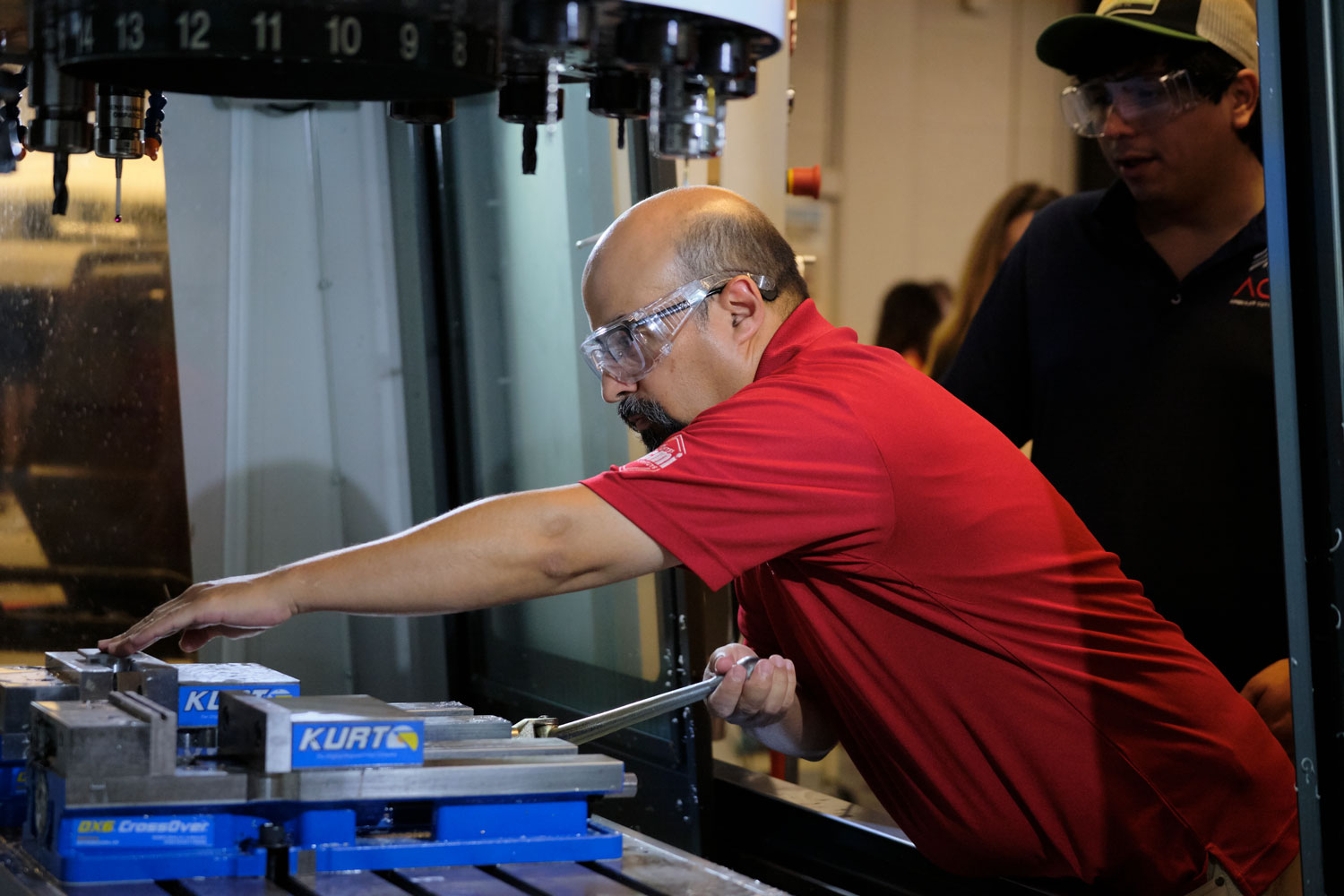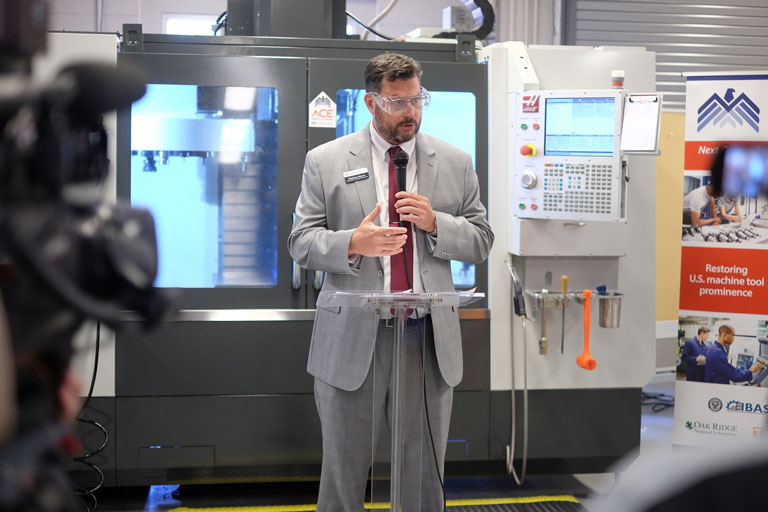Deep within the very heart of a land-grant institution’s mission are the goals for it to create opportunities and to improve economic conditions for the people in the state that it serves.
By David Goddard.
The Tickle College of Engineering has long had several programs with such outreach components, and many major grants include an aspect of connecting with people in the workforce or with precollege students who will one day join them.
While such workforce development concepts already exist, the college is now raising awareness of them across the board in a more unified manner.
“We’ve never really talked about our programs from a college-level standpoint,” said Associate Dean for Academic and Student Affairs Ozlem Kilic. “We want to take those efforts and approach them in an organized way to help us prioritize them, show how seriously we take STEM education, and boost economic outcomes for people across our state.”
Take new UT Space Institute Executive Director John Schmisseur, for example. One of his goals for the institute is to lift the economy of the region around its Tullahoma campus.
Leveraging UTSI’s presence through its campus in Huntsville, Alabama, Schmisseur hopes to draw new industrial partners into the area that are eager to work with the institute’s capabilities and educational opportunities.

Schmisseur says it is important to have workforce development opportunities alongside scholastic ones so employees are fully prepared for changes and innovations in the workplace, adding that making graduate education more accessible and integrating with other institutions would help UTSI better achieve the goals he has set.
MABE Professor Tony Schmitz is part of America’s Cutting Edge, an ongoing project led by IACMI—The Composites Institute. ACE is specifically targeted at helping the US regain its role as a worldwide leader in manufacturing.
Funded by the US Department of Defense, it merges machine tool technology and development with the training of workers on such equipment, from high schoolers on up to people currently in the workforce who are seeking to expand their knowledge and abilities.
While in-person camps have been a resounding success, ACE’s online classes have been phenomenal, to put it mildly. Since the online course launched in December 2020, more than 2,700 people representing all 50 states have taken part.
We had high hopes for a successful rollout, but this has been amazing. The success of this program is a big step toward helping current and future members of the workforce gain an edge in skills that are already in demand—skills that will only continue to grow in importance.”
Research directly funded by the DOD and work related to its goals are woven throughout other workforce development efforts in the college.
Kilic is the lead principal investigator on one such effort, “STEM Education and Apprenticeship Liaison,” or SEAL for Navy, which seeks to fill the ever-growing demand for STEM-educated employees. It is operated through the Office of Naval Research and sponsored by the US Navy’s STEM Education and Workforce Program.
The goal of the project is to better prepare future employees with mentorship programs from kindergarten through high school. It brings together aspects of UT, UTSI, and the UT Institute of Agriculture, and adds a key K–12 partner to help implement aspects of the initiative.
“This is the first sponsored partnership between TCE and 4H Youth Development to serve our nation’s workforce needs through STEM education,” Kilic said. “SEAL for Navy will be a platform for Tennessee students to be instructed in fields that will align with national workforce needs and help those efforts for years to come. This is a unique opportunity for us to come together and impact the future educational, research, and employment opportunities for youth in our state.”
Shaping Experiential Research for Veteran Education, also administered by the Office of Naval Research, seeks to provide workforce development to veterans who have returned to college.
UTSI Senior Director for Aerospace and Defense Bruce LaMattina and Associate Director for Aerospace and Defense Jerry Dahlberg helped establish SERVE, which provides research opportunities for veterans in mission-critical areas for the Navy.
Additionally, students in the program get the chance to work with highly respected labs like ORNL and Y-12.
“One of the key components to this whole concept is the idea of establishing mentor–mentee relationships, which could also include active-duty personnel and ROTC cadets,” LaMattina said. “Those relationships, along with the hands-on research that our students conduct, will provide a valuable holistic experience for program participants.”
Like SEAL for Navy, SERVE has a strong focus on diversity and inclusion.
The University Consortium for Applied Hypersonics is a university-led group that helps the DOD fulfill its goals by working with institutions, research centers, and laboratories on breakthroughs.

MABE Associate Professor Ragini Acharya, who works at UTSI, was recently funded for her proposal “Quantitative Assessment and Dynamic Advancement of the Hypersonic Workforce.” As the name implies, the goal of her program is to build up the workforce and create opportunities in the Tullahoma area dedicated to advancing hypersonics.
The challenge isn’t bringing in workers versed in current hypersonics knowledge but helping figure out the needs of the field as far ahead as 40 years and developing educational components to support them.
“We are trying to figure out what is needed for the foreseeable future,” said Acharya. “By truly taking an all-encompassing look into what works, what doesn’t, what exists, what we need, we should be able to meet those goals.”
It’s just another way TCE is helping the state improve economic outcomes, both now and for generations to come.


